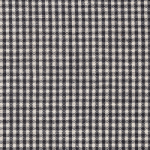Month: January 2010
Protected: Step #4: Regimental Coats
Protected: Unit Approved Tailors and Seamstresses
Protected: Step #3: Breeches and Overalls
Step #2: Shirts
 The first piece of clothing you’ll want to invest in will be a shirt, in fact I would recommend two if you can. Not only is it also a common item to every impression we do, it is somewhat “intimate” in that a shirt is the garment worn closest to the body.
The first piece of clothing you’ll want to invest in will be a shirt, in fact I would recommend two if you can. Not only is it also a common item to every impression we do, it is somewhat “intimate” in that a shirt is the garment worn closest to the body.
Two shirts are ultimately recommended for the same reason two pairs of stockings are recommended: health and hygiene. Just as wet feet lead to blisters and foot problems, a clean dry shirt on a hot day helps one cope with warm weather events.
Shirts are basically the same in construction, differing on materials due to economics. They are loose cut and very long (to the knees), the collar is long enough to fold over a stock. Materials would differ, but generally a heavier linen, bleached or unbleached/natural, was used with thread or bone buttons, one at each wrist and two at the collar.
Documentation for the 2d Virginia Regiment from the Virginia Public Store day book, issues by the clothier general, and later in 1780 at the recruiting depot in Chesterfield Courthouse show that checked linen and onsaburg were the most common materials for soldier’s body shirts:
Williamsburg, October 23, 1775
CAPT RICHARD PARKER DR
To 9 check shirts for his Comy @ 11/3 5:1:3
Williamsburg, October 27, 1775
CAPT GEORGE JOHNSTON DR
23 check Shirts @ 12/6 14:7:6
Williamsburg November 4, 1775
CAPT RICHARD PARKER for his Comy DR
To 18 check shirts @ 11/3 10:2:6
Williamsburg, November 7, 1775
CAPT RICHARD K. MEADE DR
To 31-1/2 yds Ozns for body shirts @ 1/6 2:7:3
Williamsburg, Novr 13, 1775
Capt. Meade P Self Dr
Sundries to fill up his necessary list
3-1/2 yds Ozns for body shirts @ 1/6
January 13, 1777 a purchase was made of “7 ps check 36 yds ea, 1 remnant do 28-3/4 yds, 8 ps do 18 yds ea, 6 remnt do 69 yds…”
“July 29, 1780 for a soldier escaped from Ch’town…13 yards ozn for 2 shirts, overalls, lining”
Pattern: As a shirt is no more than a collection of squares and rectangles, there is no pattern to be purchased, but rather a set of instruction on how to make your own. There are several documents on the unit’s Yahoo Group that guide you on how to do this.
Materials: Good sources for linen are Burnley and Trowbridge, Najecki Reproductions, and Wm Booth, Draper who carry both osnaburg, shirting and check linens.
Note that in the 18th century, checks tended to be in a plain weave that had warp and weft colored stripes intersecting at right angles to form squares, and that typical checks for clothing were small in the range of 1/4-3/8″, and common colors would be white/blue, white/black, white/brown, etc.
Buttons should be thread or bone, also available at Burnley and Trowbridge, Najecki Reproductions, and Wm Booth.
Thread depends on whether you are going to completely hand sew your shirt or use a sewing machine for internal seams (remember, all visible seams, button holes, and topstitching should be done by hand). If using a machine, use 100% cotton thread for the internal seams. For hand sewing and finishing, use 16/2 natural/unbleached thread, available from Burnley and Trowbridge, Najecki Reproductions, and Wm Booth.



